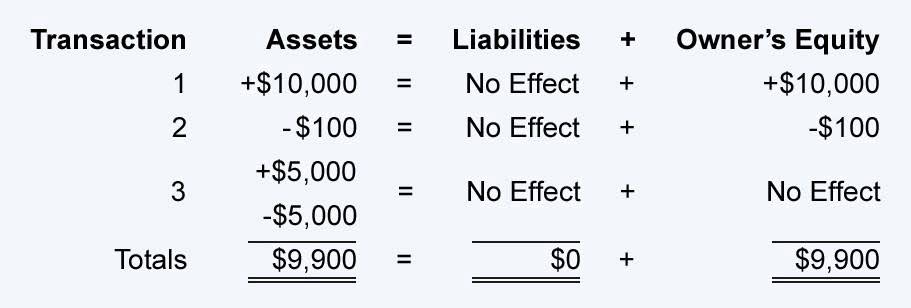Gross Income: Definition, How To Calculate It

While we strive to provide up-to-date and accurate information, we do not guarantee the accuracy, completeness and timeliness of the information on Debt to Asset Ratio our website for any purpose. We are not liable for any damage or loss arising from the use of the information on our website. Shiftbase simplifies payroll processing by integrating seamlessly with your existing system. See for yourself with a free 14-day trial of our premium plan here.
- That can make it easier to effectively budget and decide whether it’s worth pursuing additional income to help you reach your financial goals.
- AGI is calculated under IRS rules and is the starting point for your taxable income on your tax return.
- It’s also possible to have other sources of income, like investments or rental property.
- An individual's net income more closely resembles their final paycheck amount.
- Gross income doesn’t include money that you do not receive, such as discounts or subsidies.
- Your pay stub should provide you with all of this information—like which deductions you have taken out of your paychecks and in what amounts.
- There’s also gross profit margin which is more correctly defined as a percentage and is used as a profitability metric.
How do you calculate your annual income?

Here are a few examples of how your annual income calculation can impact your finances. If a company's net income is less than the gross income, the company needs to cut other expenses (indirect costs). The net income recognizes other incomes, like interest income and dividend income. Knowing whether gross income is determined before or after taxes is essential to understanding how taxes and deductions affect your annual income means regular income.
How Global Inflation Impacts Small Business Planning
In any business, gross income is the total capital gains that the business earns before any expenses get deducted. To get a more comprehensive idea of how much money you may bring home in a year, it might help to use an online annual income calculator. That’s because these calculators may take other factors into account when calculating your annual income. Without clarity around your gross pay, deductions, and final take-home amount, you operate in that problematic Financial Maze, unable to effectively budget, save, invest, or plan long-term.

How we make money
- Gross annual income represents your total earnings before any deductions or taxes.
- Employers typically withhold state and federal income taxes and FICA taxes (also known as payroll taxes, which are Medicare and Social Security taxes) from your paycheck before you receive it.
- Those with high income may also be subject to Additional Medicare tax, which is 0.9%, paid for only by the employee, not the employer.
- Equipped with our Michael Ryan Money Gross & Net Annual Income Calculator (featured prominently below!) and the roadmap in this article, you’ll cut through the complexity.
- Net annual income is based on your gross annual income and considers the various deductions you may experience, such as taxes or other withholdings.
- The purpose of calculating AGI is to determine your tax liability.
Traditionally, employees received printed checks in person or by mail, but more often today, the money is electronically deposited into a bank account. Some employers may also offer optional alternatives to paychecks, such as paycards, which can be advantageous to unbanked workers. The net annual income (sometimes called your annual income) is the money you earn that you can spend or save however you want. By providing a clear picture of your annual income from all sources, you demonstrate your financial capacity.
Job-Hugging Is Replacing Quiet Quitting. You Should Make 3 Moves to Get Ahead.
- After retirement contributions and taxes, your total net income for the year is less than $50,000.
- When you include all types of value-generating sources, it provides you with the gross annual income for an individual or business.
- Whether you have a steady yearly salary or multiple income streams, getting to a final number for your total earnings is a manageable process.
- But what if you need to calculate the annual income of a business?
- This differs from gross income which limits what can be deducted from total revenue earned.
This makes you a more attractive borrower and increases your chances of getting approved for the credit you need to achieve major life goals, like buying a home. To get a complete view, you must account for CARES Act every dollar you earn throughout the year. Summing up your primary salary, freelance earnings, and investment returns gives you a comprehensive understanding of your financial power and helps you plan more effectively.
- Your annual income is the total amount of money you make in a single year from all your income sources.
- If commissions are tied to performance, estimate conservatively based on typical earnings to avoid overestimating.
- Different types of income may not be stable enough to account for daily or monthly, so calculating your annual income helps capture the inconsistent earnings.
- You can follow these simple steps to calculate gross annual income as an individual.
- Your adjusted gross income is what your tax bill is based on every year during tax season.
- Typically, you have to collect documentation such as pay stubs, W-2 forms, 1099 forms, bank statements, investment account statements, and so on.
How to Calculate Annual Income: A Simple Guide for All Income Types
Earnings refer to the net income or take-home value after deducting all types of expenses and deductions. Posted an annual revenue of $ 257,637 million for the year ended 2021. Knowing this number is crucial because you must disclose your entire revenue to the government so you can pay the correct amount of tax and avoid any fines or penalties. DonateAs a nonprofit, we depend on the generosity of individuals like you.

Calculate Gross Annual Income Like a Pro: All You Need to Know

Your net income, on the other hand, is what you actually take home. It’s the amount left after taxes, insurance premiums, and retirement contributions are subtracted. This annual net income is the money you have available for spending and saving. A clear understanding of this figure empowers you to make smarter decisions. Lenders will use your annual income to determine your eligibility and how much you can borrow.

Lenders also check the borrower’s gross income and not their net earnings when assessing whether they have enough income to repay the loan. When comparing gross income vs. net income, keep in mind that gross income is still subject to deductions from taxes and voluntary and involuntary contributions. It's important to report all of your earned income when you file your income taxes, even side income not reported on Form 1099s.
If your payment is hourly
Sara will either have to adjust her budget to account for the $500 or find a way to increase her net income by $500 to cover the remaining expenses. Gross income is also used by lenders to determine how much they will allow someone to borrow for a loan, like an auto loan or mortgage. The lender will determine how much to lend based on the individual’s debt-to-income ratio, or DTI. The DTI is determined by dividing monthly debt payments by monthly gross income. Most people choose to itemize their deduction when it's likely to reduce their taxable income more than when they claim the standard deduction. But there are AGI limitations that prevent high-income earners from itemizing their deduction.

